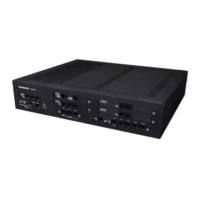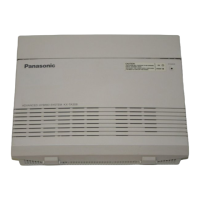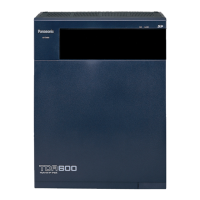The tests that are performed are as follows:
Line current OFF (Ext->CO) Line current from extension to CO line turns off.
Line current ON (Ext->CO) Line current from extension to CO line turns on.
Off hook detection (CO->Ext) Off-hook generation/detection from CO line to
extension
DTMF detection (CO->Ext) DTMF generation/detection from CO line to extension
DP detection (CO->Ext) DP generation/detection from CO line to extension
BELL detection (Ext->CO) BELL generation/detection from extension to CO line
Speech path (Ext->CO) Speech path from extension to CO line
Speech path (CO->Ext) Speech path from CO line to extension
To perform a pair port test
1. Click on the Status cell of the extension card to be tested, and set it to "OUS".
2. Click Test.
A new window will be displayed.
3. Select the Pair Port Test option. A new window will be displayed.
4. In Extension Line,
in the Site-Shelf-Slot No. drop-down list, select the extension card to test. Each card
will be preceded by a 3-digit number, following the pattern "XYZ":
• X: Site number (1–16)
• Y: Shelf number (2–3 [Corresponding to Legacy Gateway 1 or 2])
• Z: Slot number (1–11)
5. From the Port No. drop-down list in Extension Line, select the port number of the extension to test.
6. In CO Line, in the Site-Shelf-Slot No. drop-down list, select the CO line card to test. Each card will be
preceded by a 3-digit number, following the pattern "XYZ" as described in step 4.
7. From the Port No. drop-down list in CO Line, select the port number of the CO line to test.
8. Click Test.
The error report will be displayed.
9. Select an option:
• Click Capture if you want to save the displayed information.
1. Specify the save destination and file name.
2. Click Save.
• Click Cancel to return to the Diagnosis screen.
116 PC Programming Manual Document Version 2016-03
7.1.1 Utility—Diagnosis—Card Diagnosis

